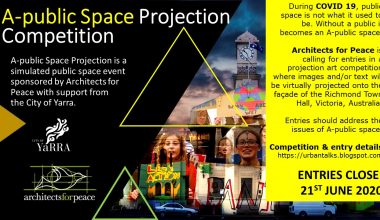Date: Thursday 1 August, 2013
Time: 7.00pm
Venue: Elisabeth Murdoch Building, Victorian College of the Arts (Southbank campus), 234 St Kilda Road, Melbourne
The complexity and volatility of spatial relations in the Middle East have been brought into sharp relief in recent times. Delineation of space in these highly contested territories – whether physical or systemic – has been known to play a key part in manifestations of injustice, where authorities have sought to limit freedoms, control movement and enact human rights abuses. Yet, conversely, spatial practices can be used to challenge these same mechanisms of oppression.
The 2011 protests in Syria, part of the wider Arab Spring movement, initially contributed to a renewed faith in the power civic protest in the public realm to enact positive, long term political change. Widely perceived as heralding a new age of citizen-led liberation and empowerment, such demonstrations of resistance have captivated the Western world and inspired similar actions elsewhere. Sadly though, the initial post-revolt euphoria has given way to months of seemingly intractable warfare and displacement of citizens. Nearby, the ongoing annexation of Palestinian territories and corresponding infringement of human rights at the hands of Israeli authorities continues in a more covert manner, receiving relatively little media attention. Both regions face dramatically different conditions and challenges, yet share a common history of acts of resistance, in defiance of human rights abuses.
Join us for a critical look at creative resistance across disciplinary and territorial borders, with Palestinian artist Sary Zananiri; journalist/activist Firas Massouh; architecture student Nora Massouh and Rachel Busbridge, Research Fellow at the Centre for Dialogue, La Trobe University.
Refreshments provided/gold coin donations welcome!
Image: “Il giardino occupato”, by Palestinian artist Basjir Makhoul. Installation in the Palestinian pavilion, Venice Biennale, July 2013





